Description
Success in nursing school is truly a journey. Spend less time learning worthless information and more time memorizing what you need to know. Our nursing test banks for sale are proven to generate results, regardless of your education level or any previous failures you may have experienced. Add this product to your cart and checkout to download this Test Bank Pathophysiology A Practical Approach ( 1st Edition ) Story.
*** BELOW, IS A SAMPLE FROM THIS NURSING TEST BANK, YOU WILL RECEIVE THE CHAPTERS VIA PDF OR WORD DOCUMENT ***
Chapter 2:
___ 1. A 2 day post-op heart transplant patient begins to have fever and signs and symptoms of heart failure. The patient is more than likely experiencing which of the following?
A) Type I, IgE mediated hypersensitivity.
B) Type III, immune complex-mediated hypersensitivity.
C) Graft vs host disease.
D) Host vs graft disease.
___ 2. Which of the following is a complication of chronic stress?
A) Renal disease.
B) Diabetes mellitus.
C) Pathological fractures.
D) Increased susceptibility to illness.
___ 3. Within minutes after receiving an injection of penicillin, the patient complains of shortness of breath and chest pain. The nurse notifies the patient’s healthcare provider because this patient is most likely experiencing which type of hypersensitivity?
A) Type I
B) Type II
C) Type III
D) Type IV
___ 4. During which of the following stages of the General Adaptation Syndrome (GAS) has the body’s coping methods been completely utilized?
A) Alarm.
B) Resistance.
C) Transference.
D) Exhaustion.
___ 5. Which of the following is a chemical released from the sympathetic nervous system by the adrenal medulla that is responsible for many of the physiological symptoms of the “fight or fight” response?
A) Insulin.
B) Cortisol.
C) Epinephrine.
D) Corticotropin.
___ 6. The nurse conducts group education for patients with seasonal allergies, and teaches about the role of histamine. The nurse evaluates that the education has been effective when the patients make which response?
A) “Histamine dilates the vessels in the nose, so it is congested and stuffy.”
B) “Histamine is inhibited by allergies, therefore leading to the signs and symptoms.”
C) “Histamine constricts vessels, causing capillaries to become more permeable.”
D) “Histamine is primarily stored in phagocyte cells in the skin.”
___ 7. Which of the following is an example of passive immunity?
A) Immunizations.
B) Transplant rejection.
C) Response to a disease.
D) Placental transfer of antibodies.
___ 8. What disease state results from an inability to differentiate self from non-self?
A) Immunodeficiency.
B) Hypersensitivity.
C) Autoimmune.
D) Anaphylaxis.
___ 9. Which of the following patients is at the greatest risk for impaired immune function?
A) 23 year old female that is 5% above her ideal body weight.
B) 79 year old male with poorly controlled diabetes mellitus.
C) 89 year old male controlled hypertension.
D) 45 year old female recently widowed.
___ 10. Which of the following situations represents a break in the “first line of defense” against infection?
A) An abnormally low total white blood cell (WBC)count.
B) A “shift to the left” on the WBC differential.
C) Use of an indwelling bladder catheter.
D) Poor nutritional status.
___ 11. HIV infection causes immunodeficiency because it
A) blocks the ability of macrophages to present antigens.
B) causes excessive production of cytotoxic T cells.
C) directly inhibits antibody production by B cells.
D) causes the destruction of T helper cells.
___ 12. With which patient is it most important for the nurse to take special precautions because of an increased susceptibility to infection as a result of medical therapy?
A) The 38-year-old woman taking contraceptives
B) The 38-year-old man with diabetes mellitus taking insulin
C) The 58-year-old woman with rheumatoid arthritis taking corticosteroids daily
D) The 58-year-old man 5 years after a myocardial infarction taking aspirin daily
___ 13. Although skin manifestations may occur in numerous locations, the classic presentation of systemic lupus erythematosus includes:
A) Lesions affecting the palms of hands and soles of feet.
B) Dry, scaly patches in the antecubital area and behind the knees.
C) Cracked, scaly areas in webs of fingers.
D) Butterfly pattern rash on the face across the bridge of the nose.
___ 14. The nurse recognizes that which of the following is required for a diagnosis of AIDS (acquired immunodeficiency syndrome)?
A) Lymphocytopenia
B) Abnormally functioning macrophages
C) CD4+ cell count of less than 200 cells/mm3
D) Increased production of incomplete and nonfunctional antibodies
___ 15. Which statement made by the patient newly diagnosed with systemic lupus erythematosus indicates a need for further teaching about the course and management of this disease?
A) “I will take my medication even if my symptoms improve.”
B) “I will report any fever to my health care provider immediately.”
C) “I will sunbathe as often as possible to ensure I get enough vitamin D.”
D) “I will not have my hair dyed, frosted, or permed unless I am in a period of remission.”
___ 16. Which of the following findings is a systemic sign of inflammation?
A) Pain
B) Loss of function
C) Edema
D) Elevated erythrocyte sedimentation rate
___ 17. In the context of aging, tertiary prevention refers to:
A) prevention of incident diseases and geriatric conditions
B) early detection, treatment and management of prevalent and recurrent conditions.
C) reducing the impact of comorbidity on physical functioning and premature mortality.
D) public health promotion of preventive healthcare.
___ 18. Which type of immunity is developed following injection of antibodies synthesized by another human or animal?
A) adaptive
B) active
C) innate
D) passive
___ 19. The major disadvantage of passive immunization is that it:
A) is ineffective
B) is expensive
C) interferes with active immunization
D) induces short-term protection
___ 20. Which of the following is true about inflammation?
A) It is a specific response to an insult.
B) It requires previous exposure.
C) It is the second level of response to injurious agents.
D) It only lasts for short periods of time
E) It exists in almost all chronic illness in the body.
___ 21. Which of the following is not a part of the inflammation process?
A) Contraction of vascular smooth muscle
B) Increased blood flow
C) Increased permeability of vessels
D) Dialation of vessels
E) Intracellular gaps in vessels which passage of large proteins
___ 22. Which of the following are systemic effects from an inflammatory response?
A) Elevated temperature
B) Redness and swelling
C) Blisters
D) Pus
___ 23. What happens when the vasodilator histamine is released by the mast cells?
A) The inflammatory process is ended.
B) Blood platelets adhere to collagen fragments and begin the healing process.
C) Blood vessels expand and become more permeable.
D) Blood vessels constrict and become less permeable.
___ 24. Which of the following is an immunoglobin E (IgE)-mediated hypersensitivity reaction?
A) A transfusion reaction resulting from an infusion of incompatible blood into a person who has pre-existing antibodies directed against the transfused cells
B) Organ or tissue damage resulting from deposition of antigen-antibody complexes in the organs or tissues of an affected person
C) An area of swelling and tenderness in the skin after an intradermal injection of protein material derived from the tubercle bacillus
D) A penicillin reaction characterized by fall in blood pressure and respiratory distress after an injection of penicillin in a person who has become sensitized to penicillin as a result of a previous penicillin injection
___ 25. Autoimmune diseases are caused by __________.
A) authoantibodies
B) non-self-antigens
C) self-antigens
D) none of the above
___ 26. Lupus erythematosus is a common connective-tissue disease that is most frequently seen in __________.
A) young women
B) young men
C) older women
D) older men
___ 27. An important and serious infection in AIDS patients is a pneumonia caused by a small parasite that grows within pulmonary alveoli, called
A) Pneumocystis carinii
B) Chlamydia
C) Toxoplasma
D) The EB virus
___ 28. Which is NOT one of the common agents that causes opportunistic infections in AIDS patients?
A) Pneumocystis carinii
B) Cytomegalovirus
C) Mycobacterium avium-intracellulare
D) Corynebacterium diphtheriae
E) Toxoplasma gondii
Answer Key
1. D
2. D
3. A
4. D
5. C
6. A
7. D
8. C
9. B
10. C
11. D
12. C
13. D
14. C
15. C
16. D
17. C
18. D
19. D
20. E
21. A
22. A
23. C
24. D
25. A
26. A
27. A
28. D
Rationales
1. The patient is exhibiting symptoms of organ transplant rejection which manifests as symptoms of organ failure. This type of rejection is associated with host verses graft disease in which the body is fighting the rejection.
2. Chronic stress can impair the immune response. While all the other responses are stressors on the body, they are not a result of chronic stress.
3. The patient is exhibiting symptoms of anaphylaxis likely as a result of the penicillin injection. Anaphylactic reactions are type I hypersensitivity reactions.
4. The exhaustion phase of the GAS occurs when coping mechanisms have been fully used up resulting in either the stressor being resolved or disease. Alarm is the body’s recognition of the stressor, and resistance is the initiation of coping mechanisms. Transference is not a stage of GAS.
5. Epinephrine produces much of the “fight-or-flight” symptoms. Insulin is not produced during this response and is not produced by the adrenal medulla. Cortisol is released during this response but by the adrenal cortex. Corticotropin is produced by the hypothalmus.
6. Histamine produces much of the inflammatory manifestations by dilating vessels. It is triggered by allergens, not inhibited by them. Constricting vessels would make them less permeable not more. Histamine is not stored in phagocyte skin cells.
7. Placental transfer is the only example of passive immunity because the infant is not actively creating antibodies, but it is borrowing the mothers. Immunizations and having the disease are examples of active immunity because the body actively forms antibodies when exposed to the vaccine or disease. Transplant rejection is not a form of immunity.
8. The body has lost the ability to distinguish self from non-self and begins to fight self in autoimmune conditions. Immunodeficiency is an ineffective immune response. Hypersensitivity and anaphylaxis are excessive immune reactions.
9. The 79 year old has 2 risk factors, advancing age and uncontrolled diabetes mellitus, and the other patients only have one.
10. The “first line of defense” is the skin and mucous membranes that provide a nonspecific barrier to keep all foreign substances out. A breach in the first line would be the presence of an indwelling catheter. A low WBC count, a “shift to the left”, and poor nutrition would give some indication of an issue with the second and third lines of defense.
11. The HIV infect and replicate in the CD4, which are T cells. The CD4s are destroyed in the process. With less CD4s the immune system is ill equipped to manage invasions. The other options do not occur with HIV.
12. The 58 year old woman has 2 firm risk factors, a chronic disease and a medication that impairs immune response. Her age may be a factor but not a strong one. A doesn’t have any risk factors. B has one, a chronic disease. With D, his age may be a weak risk factor, but the past medical condition should not be a significant factor.
13. The butterfly patterned rash across the face is a classic manifestation associated with SLE. The other options are not generally seen.
14. To be changed from HIV+ to a diagnosis of AIDS, requires a drop in the CD4 count to below 200 cells/mm3. The other options are not specific to AIDS.
15. Photosensitivity is a common manifestation of SLE, and sunbathing would worsen the condition. The patient will have to take medications even in the absence of symptoms. Infections are often a trigger for a exacerbation, and the patient is at increased risk for infection because they have a chronic disease and the medications often impair the immune reaction. Fever can be an indication of an infection.
16. Elevated erythryocyte sedimentation rate is the only systemic indicator of inflammation. The other manifestations are local.
Our staff is available throughout the day and night. If you need to see a sample or have any question whatsoever, please email us at inquiry@testbankcorp.com. We will respond as fast as possible. You will be surprised at how fast we respond.

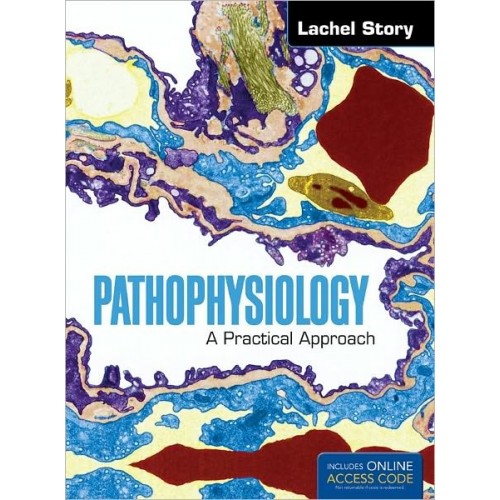
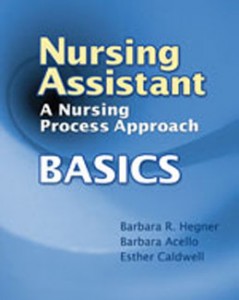
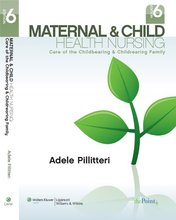
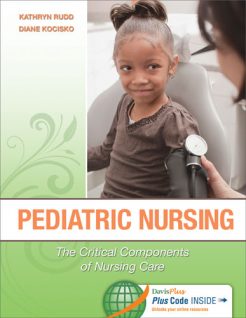
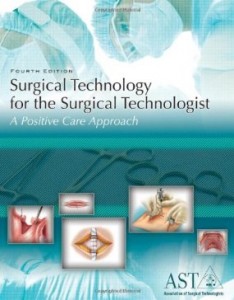

Reviews
There are no reviews yet.